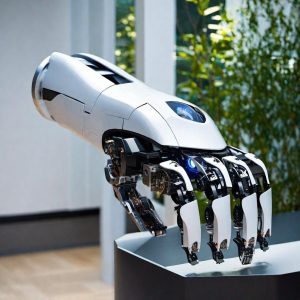
The first robotic arms appeared and began to be used almost a century ago. The scientist who patented the remote arm in 1951 was Raymond Hertz. It was designed for industrial use, namely for working with radioactive substances and materials.
A few years later, George Devol started working on the Programmed Transfer Article project and founded his own company, which was later bought out by Condec Corp. A team of 6 people set about implementing Devol’s plans. The first step was to create a mechanical arm with 5 degrees of freedom.
Other companies and countries were working on similar projects. This is how the “Stanford arms ” appeared – industrial robots that had 6 degrees of freedom. They were developed at Stanford University by Victor Sheinman in 1969. This device was a serial manipulator with a kinematic chain consisting of two rotary joints (prismatic and spherical).
In 1976, the robotic arm was first used in the Viking 1 and 2 space probes.
Over time, similar devices began to be mass-produced and implemented in various areas of human life.
One of the most popular brands is Dobot, which produces
Shenzhen Yuejiang Technology Co., Ltd.
.
The company’s main products are:
- Dobot V1.0. This arm could perform homework that the user clearly formulated.
- Dobot Magician could write and make laser engraving.
- Dobot M1, was equipped with two tool attachments, suction cups, 4th axis or laser engraver attachments and was designed for industrial use by small businesses.
- Dobot Rigiet is a three-axis stabilizer for cameras and smartphones.
American scientists at the Center for Music Technology at the Georgia Institute of Technology have also been actively working in this area, so in 2016 they offered the general public a replaceable mechanical arm that turned an ordinary drummer into a “cyborg.” The device was 61 cm long, picked up music waves, and could improvise with tempo and rhythm, not just copying the musician’s movements but reacting quickly to musical vibrations, allowing it to complement the music. The invention is equipped with an accelerometer. This allows it to adjust its position in relation to the drum kit. Thanks to the technology used, the movements of the “mechanical hand” are soft and natural.
British scientists announced their latest achievements. They have developed a robotic arm that is significantly different from those that exist today. It can hold objects without releasing them. The sensitivity of the “skin” and the movement of the wrist help her do this. It can predict whether it will be able to hold certain objects. To do this, the mechanism uses information received through the scanners placed on it. Researchers have printed a robotic arm on a 3D printer that has implanted sensors that allow it to sense the objects it touches.
The device can perform passive movements based on the wrist. The individual fingers were fully motorized. More than 1200 tests were conducted during the study. At first, he was trained with small and medium-sized plastic balls, after which he made attempts to grab various objects, such as a peach, a roll of film, etc. According to observers, the robotic arm passed the test, grabbing 11 out of 14 objects.
MIT scientists shared their findings. They have developed an experimental robotic arm, the GelSight EndoFlex, which uses GelSight technology. It consists of 3 mechanical fingers, arranged in a Y shape at the top and an opposed thumb at the bottom. The fingers are covered with an articulated hard polymer frame encased in a flexible outer layer and equipped with two GelSight sensors. When the painted side touches the surface of an object, it follows its contour, and the opposite side with a camera and three colored LEDs in the middle captures the details of the surface. Then, using algorithms on a computer, this data is converted into three-dimensional images. EndoFlex combines 6 sensors to create a 3-D model of the captured object. The graduate students and professor who worked on this research emphasized the importance of having both soft and hard elements in the robotic arm, as well as the ability to sense a large area.
Thus, every year we continue to work on improving robotic arms and introducing their use in various areas of human activity.

